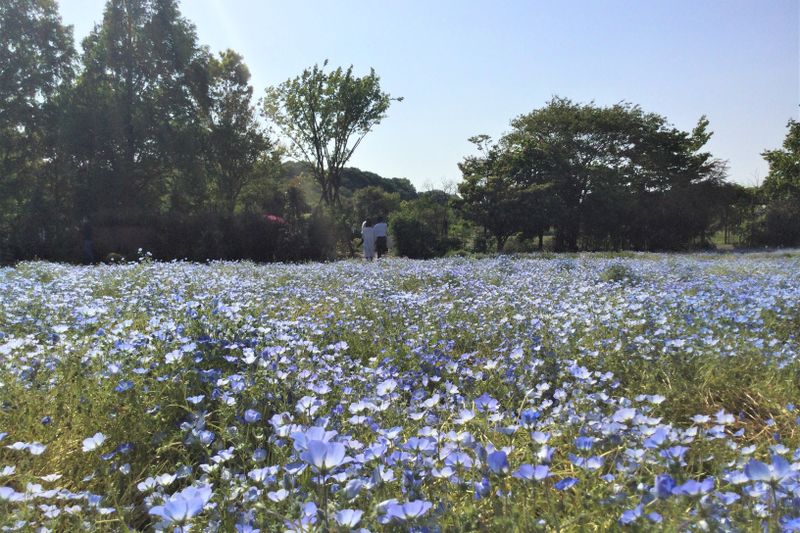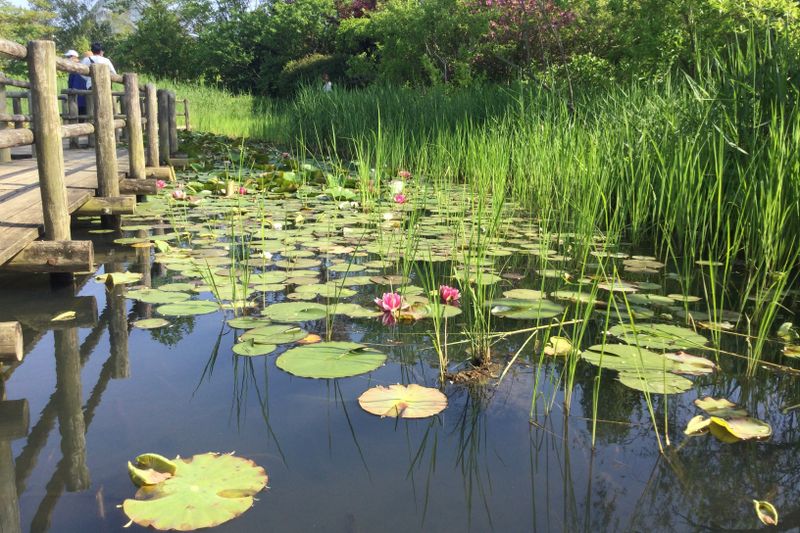May 16, 2022
Learn about Indigenous Plants at Botanical Gardens
When it comes to natural abundance, the neighborhood I live in is teeming with wildlife and greenery. It’s between the Edo and Tone Rivers, close to a nature preserve, farm fields, thickets, and tributaries of the rivers. There is a great variety of trees, shrubs, and flowers everywhere I look. All this beautiful vegetation is nice to rest my eyes on as I breathe in the fresh air.
But I must admit, I have no idea half the time what the plants are called. Some are familiar because they have been exported globally, but I don’t know the foliage or flowering season of many of them. Sometimes I ask my neighbors or passersby for the names of the plants. Or I look them up on the Internet.
Between our local beauty spot, Shimizu Park, and the wildlife sanctuary that borders the Edo River is Hana Fantasia, a botanical garden that satisfies my curiosity. The garden's seven-hectare park around a pond has a fairly wide range of domestic and imported plants. The plants aren’t necessarily rare or special, but they’re all labeled. The park’s website has a flower list and blog that names all the gorgeous blooms.
In Golden Week, I dropped by the garden to see what was in bloom and to satisfy my curiosity about plants in anticipation of growing something on my veranda.

The meadow in front of the greenhouse is planted with nemophila, baby blue eyes. You might know these flowers as they’re a big spring attraction at Hitachi Seaside Park in Ibaraki Prefecture with vast fields of small sky-blue flowers. And for North Americans from regions where they are native plants, they’re a reminder of home.
The park has many plants native to Japan, of course, and this is what I had looked forward to seeing and learning about. A native flower I had expected to see in Golden Week is the purple wisteria, but it had already finished by May 5th in my region. However, the white wisteria was at its peak. The spectacular wisteria floribunda is native to Japan and has pink, lilac, and violet cultivars.
The pond is full of water lilies at this time of year. This aquatic plant is found all over East Asia, and some species such as Nymphaea “Tetragona” with symmetrical white blooms are of Japanese origin. In the pond is a mix of different varieties including this white species.

My favorite white springtime blossom is oodemari, the Japanese snowball bush. There are a few varieties around the garden. This flower was in the garden of my family home in Canada. Seeing its profuse blooms made me feel a little more at home on my walk through the garden.

Like many botanical gardens in the greater Tokyo area, this one has a greenhouse with exotic plants from Africa and South America. These greenhouses may be a bit too steamy in spring and summer, but they’re a great place to warm up on a bitterly cold winter day.
Maybe Flower Fantasia isn’t on your bucket list, but it’s a lovely place to learn about plants in my little neighborhood. I highly recommend a visit to botanical gardens around the Tokyo capital region.
One of my favorites is Mukojima Hyakkaen, the only remaining Edo-era flower garden. Not only does it have flowers but it also has connections to literature and poetry carved on monuments. Another is Yumenoshima Tropical Greenhouse Dome which has spacious greenhouses one of which shelters indigenous plants of the Ogasawara Islands.
Does your region have a botanical garden? When do you recommend visitors go?



0 Comments